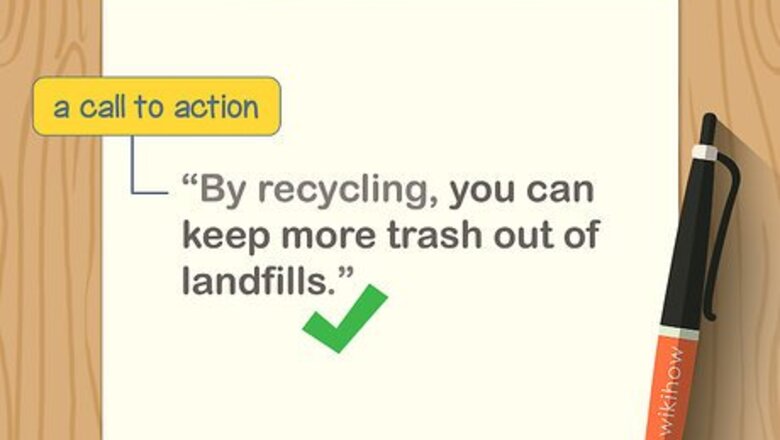
views
Creating Endings for Different Kinds of Papers
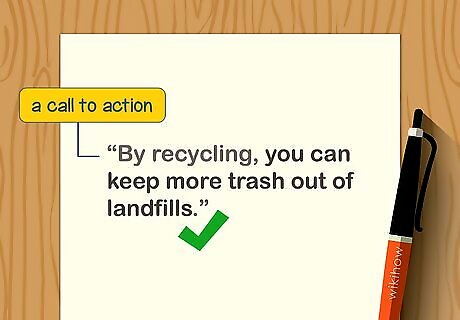
Use a call to action if you want your reader to do or think something. A call to action is the most popular way to end an essay. It leaves your reader thinking about what they just read. Tell them what you want them to do or think about, as well as what that might achieve. This type of ending can work well for a variety of subjects, but it works best for persuasive writing. As an example, “By recycling, you can keep more trash out of landfills.”
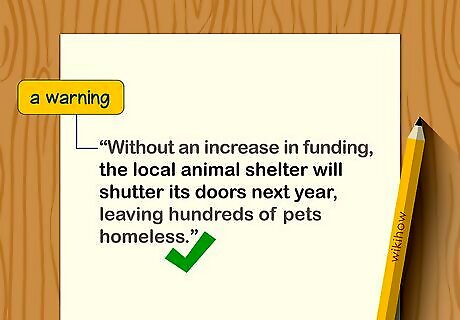
End with a warning if your topic addresses a concern. This works well if your topic involves harms or consequences that may occur. Tell the reader what might happen if nothing is done to address the issues you’ve brought up in your paper. Do your best to show why not taking action will be harmful to society. You can use this ending for a research or policy paper. You might write, “Without an increase in funding, the local animal shelter will shutter its doors next year, leaving hundreds of pets homeless.”
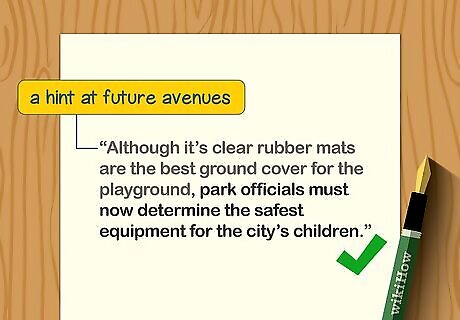
Hint at future avenues if your paper explores or analyzes a topic of research. If your topic is very complex, you’ll likely focus your paper on just part of it. Similarly, you may finish writing your paper and realize that there are a lot of avenues of study available. When this happens, you can tell the reader about the future prospects for learning more about the subject. You’re more likely to use this type of ending for subjects like the sciences and social sciences. For instance, “Although it’s clear rubber mats are the best ground cover for the playground, park officials must now determine the safest equipment for the city’s children.”

Evoke an image to encourage an emotional response in your reader. An image is a great way to create an emotional argument without it seeming out of place in your paper. For a paper suggesting a change, you might present an idyllic image that could occur if the change is made. Alternatively, you might create a frightening scene that might occur if the change isn’t made. Additionally, you might evoke a scene from a novel if you’re writing about literature. Use this type of ending if you’re writing a persuasive or expository piece or doing literary analysis. You might write, “With the upgrades to Cedar Park, families will enjoy a picturesque nature experience without traveling far from home.”
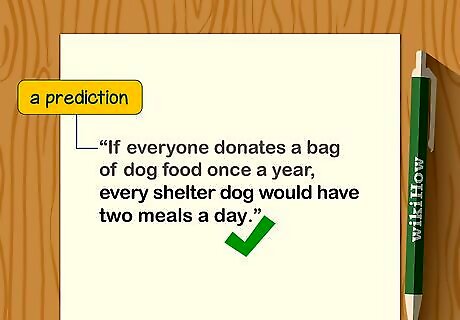
Make predictions on what could happen if you’ve presented a course of action. Your predictions might be positive or negative, depending on which you think will be more persuasive. This can play on your reader’s emotions, making your ideas more compelling. This type of ending works best for research or policy papers. For example, “If everyone donates a bag of dog food once a year, every shelter dog would have two meals a day.”
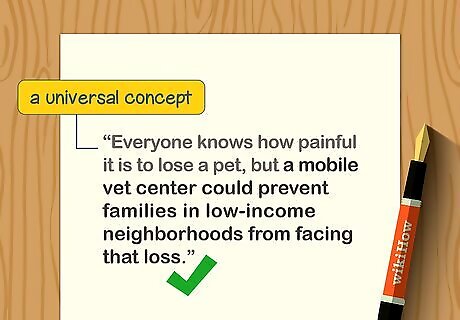
Compare your ideas to a universal concept to help readers relate. Your reader will find your ideas more compelling if they can relate to them. To ensure everyone is able to relate to your ideas, you can tie them to something everyone understands. For example, most people can relate to feeling love for their family, to dealing with stress, or to the pain of loss. You can use this type of ending for any subject, but it's especially effective for policy or literature papers. As an example, “Everyone knows how painful it is to lose a pet, but a mobile vet center could prevent families in low-income neighborhoods from facing that loss.”
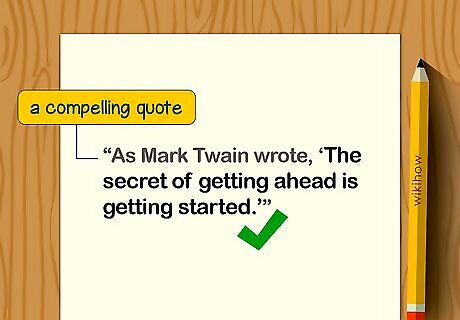
End with a compelling quote to provide a sense of closure. Quotes can be tricky to use because the quote you use shouldn’t be part of your evidence. Instead, choose a quote that presents a nice idea related to your topic. This can leave your reader on a positive note. If you’re doing a writing assignment for a high school or college class, find out if your teacher or professor will allow you to end your piece with a quotation. Keep in mind that ending with a quote can leave the reader with the impression that you are leaning on someone else’s ideas instead of trying to express your own. A quote works best when you’re writing about literature, but may also fit with topics from the social sciences. You might write, “As Mark Twain wrote, ‘The secret of getting ahead is getting started.’”
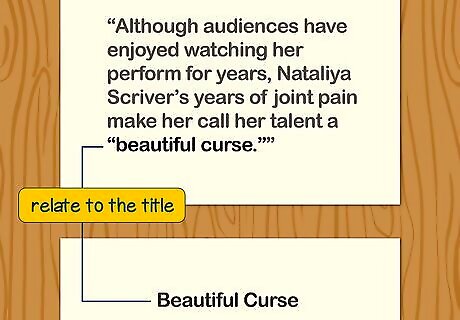
Reference your introduction or title to bring your paper full circle. This can create symmetry in your essay, as the conclusion will mimic the introduction. Don’t use the exact same phrasing you used in the beginning. Instead, refer to what you said earlier, putting a new twist on it now that the reader has read your points and evidence. Let’s say the title of your essay about a ballerina who developed arthritis is “Beautiful Curse.” You might end your paper with, “Although audiences have enjoyed watching her perform for years, Nataliya Scriver’s years of joint pain make her call her talent a ‘beautiful curse.’” As another example, you might have begun your essay with a story about the first time Nataliya danced a lead role. You might end your paper by writing, “While her first steps as the White Swan filled her with joy, now Nataliya’s steps bring only pain.”
Revising Your Sentence
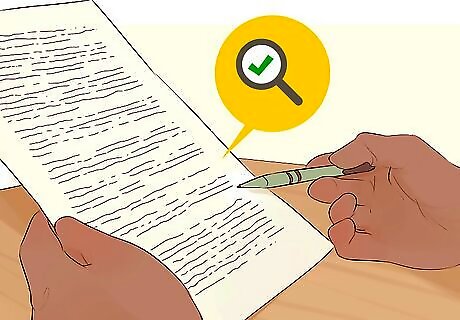
Read your entire paper through to the final sentence. It’s best to read your paper 2 or 3 times. You might even read it aloud, if you can. This helps you determine if your final sentence fits with the rest of the paper and has the impact you want. As you read over your paper, make note of typos, errors, or areas you want to revise later.
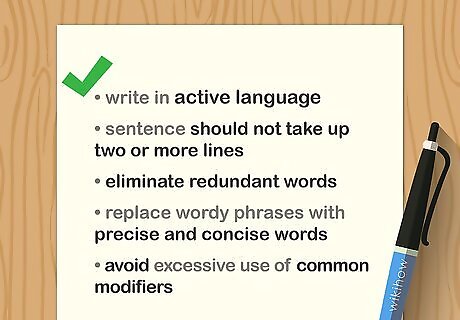
Cut out redundant words and phrases. Your conclusion is the easiest place to be redundant because you’re summarizing your thoughts and leaving your reader with a final impression about your topic. Read through your paper after you write your last sentence to make sure your final thought doesn’t sound redundant. Put your ideas together, but don’t just summarize what you said. This helps you avoid repeating yourself.
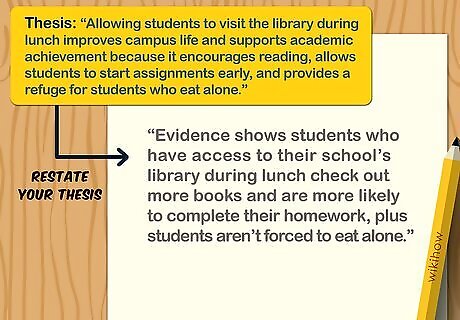
Decide if your final sentence fits your paper and fulfills your goals. You want your final sentence to flow naturally with the rest of your paper so it doesn't stand out. Additionally, you want it to accomplish what you set out to do when you chose which type of ending you wanted to write. If you don’t think your sentence is doing these two things, consider why you might feel that way. Then, brainstorm on how you could improve it. You can always improve your sentence during your revisions.

Ask a friend or relative to read your paper and give feedback. Getting a second pair of eyes on your paper will give you another perspective on it. Since they likely don’t know the topic as well as you, they can tell you if your paper leaves lingering questions. Additionally, you can ask them how your ending made them feel. Invite your reader to make notes on your paper and suggest necessary revisions.
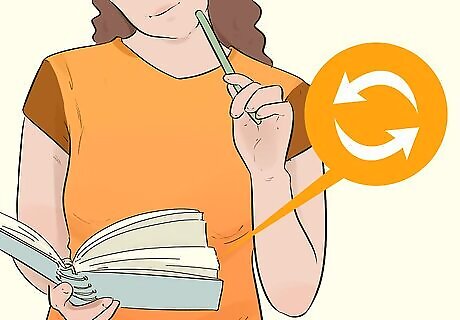
Use your notes and feedback to make your final revisions. Tweak or rewrite your final sentence if you think it still needs work. Make your changes based on your notes and the feedback from the friend or relative who read your paper. If you revise your sentence, be sure you read through the entire paper again. It’s also a good idea to have your friend or relative re-read your paper to see if your new sentence works better.
Crafting an Effective Final Sentence
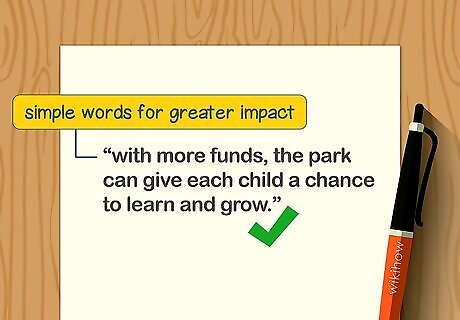
Choose simple, one-syllable words for a greater impact. Opt for one-syllable words when possible, since these can make your last sentence hold more weight. Additionally, they help you create a feeling of finality. You might write, "With more funds, the park can give each child a chance to learn and grow." Each of these words contains just one syllable, but it conveys an important final note about the importance of the author's ideas about funding the park. Don’t spend too much time and effort trying to find a one-syllable synonym for every word in the sentence. This isn’t a hard and fast rule—the idea is just to write a concise, punchy sentence.
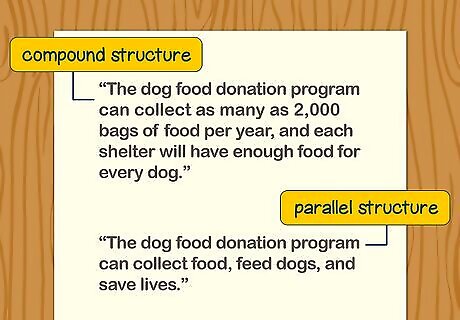
Use a compound or parallel sentence to create a balanced ending. A compound sentence consists of two independent clauses (or sentences) joined together with a coordinating conjunction, which are your FANBOYS. A parallel sentence includes the repetition, or listing, of words or phrases that have the same grammatical structure. For example, "Kate likes reading, writing, and studying." FANBOYS is an acronym for the conjunctions "for," "and," "nor," "but," "or," "yet," and "so." If you're using a compound sentence, you might write, "The dog food donation program can collect as many as 2,000 bags of food per year, and each shelter will have enough food for every dog." If you're using a parallel structure, write, "The dog food donation program can collect food, feed dogs, and save lives."
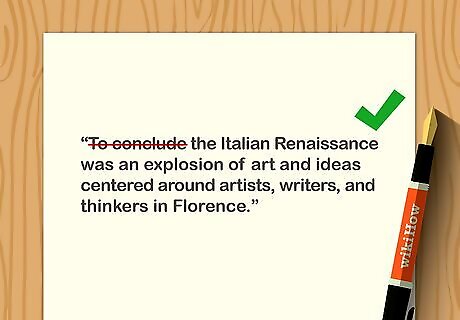
Avoid using opening phrases like "in conclusion" or "in summary." Using clichés like these is a big turn-off for readers. They already know they're reading your conclusion because they've reached the end of your paper, so this may feel redundant. These phrases are more appropriate for an oral presentation.
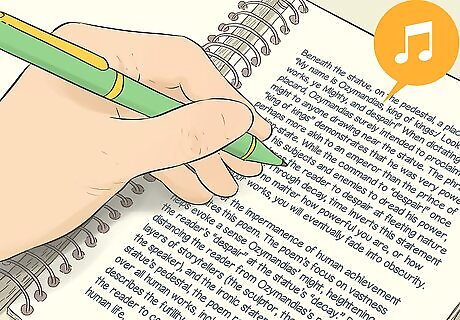
Use the same tone as you did throughout the rest of your paper. Switching tones at the end of your paper can unsettle or confuse your reader, as it will seem out of place. Make sure your attitude toward your topic and the formality of your writing remain the same throughout your paper. For instance, you might think an emotional, dramatic ending will linger with your reader longer. However, that’s not an effective strategy if the body of your paper is logical or analytical.
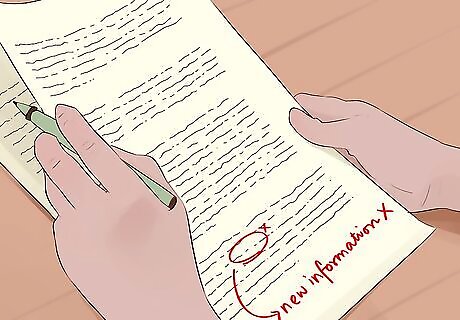
Refer only to information you included in your paper. Never bring up a new idea or topic in your conclusion, especially in the last line. This will leave the reader feeling confused and as though they have unanswered questions. If you realize you left something important out of your paper, don’t simply try to tack it on at the end. Go back and insert it into the body of your paper.
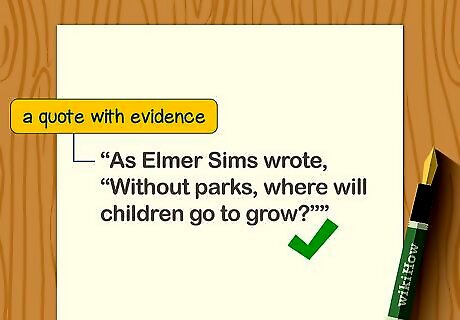
Keep your evidence in the body of your paper. Support like statistics and expert quotations might seem like the perfect way to cap off your paper, but these belong in the body of your paper. Evidence is only useful to support your points if you provide commentary explaining why it supports your argument, which you can’t do in your conclusion. You can still use a quote at the last line of your conclusion, but it shouldn’t be one that serves as a piece of evidence for your article. For example, an evidence quote might read, “According to Luz Lopez, Cedar Park employees can’t handle the park’s upkeep on the current budget.” This might support the idea that more funding is needed, but the evidence requires your analysis. However, you might end your paper with a quote like, “As Elmer Sims wrote, “Without parks, where will children go to grow?”
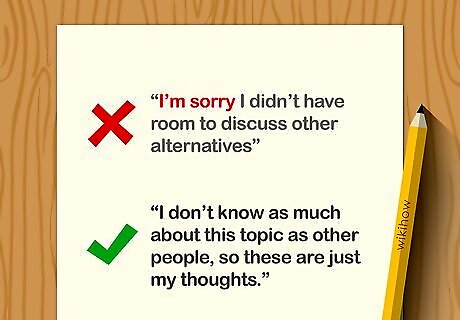
Avoid apologizing for what you’ve written. You might not feel like an expert on the topic you chose, but you should always take on the role of “expert” when you write an essay. Similarly, you might realize you weren’t able to provide as much information as you’d have liked. Don’t apologize to your reader for any perceived shortcomings, as this will undermine your ideas. For instance, don’t write, “I’m sorry I didn’t have room to discuss other alternatives,” or “I don’t know as much about this topic as other people, so these are just my thoughts.”















Comments
0 comment